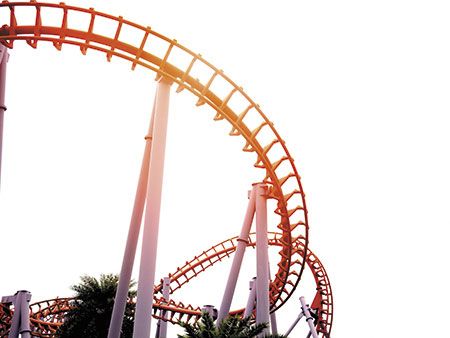The ups and downs of diabetic management
Monitoring diabetic patients can be a rollercoaster for you and for pet owners. Heres how to set the tracks for a smoother ride.

Photo: Shutterstock.comDiabetes mellitus can be a wild ride. But it doesn't need to be that way. Consider these strategies to more effectively monitor our diabetic patients.
History and physical exam
The pet owner history is perhaps the most useful tool in diabetic management. The pet's degree of thirst, urination, appetite and body weight are all as important as any test result, including blood sugar measurements. A pet with a less-than-perfect test result that's doing great according to the pet owner may warrant no changes. Perfection in diabetes is often an unachievable goal, and focusing on numbers alone may lead to endless adjustments without improved health.
Urine dipsticks
You can teach dog owners to check urine ketones and glucose daily and keep a log. We don't make adjustments to their insulin based on the results, but the information can be invaluable if a pet owner calls reporting a diabetic pet isn't feeling well. “Does the pet have ketones in their urine?” is often our first question. Ketones indicate potentially serious illness and warrant seeing the pet as soon as possible.
In general, we prefer our diabetics to have some sugar in their urine at all times, as negative urine on a dip stick may indicate their blood sugar is too low. But keep in mind that excessive amounts of sugar on dipsticks may also be a problem. Following up with a blood glucose curve helps us know how to proceed.
It's often more challenging to check urine on cats at home. After all, we don't want to turn kitties off their litterboxes by following them around.
Spot blood glucose measurements
Many veterinarians employ spot blood sugar measurements to help manage their diabetic patients. This is convenient for pet owners and your veterinary team, and it's cost-effective. But a one-time blood sugar measurement can be extremely difficult to interpret. After all, we don't know if that blood sugar is the highest or lowest it's been all day.
A spot check of 100 mg/dl may seem ideal, but perhaps the patient's blood sugar drops to 35 mg/dl two hours later-after all, not all diabetics have the same peak onset of insulin. So this isn't a recommended means of monitoring diabetic patients, either in the hospital or at home.
Fructosamine
Fructosamine is an approximate measure of the blood sugar over the prior two to three weeks. Fructosamine levels will be high with prolonged hyperglycemia.
This test can be useful to distinguish stress hyperglycemia from persistent hyperglycemia in cats, but it can be challenging to interpret in known diabetics. Because of the Somogyi effect-rebound hyperglycemia secondary to too much insulin-a high fructosamine may indicate both under- or over-control of diabetes.
Blood glucose curves
Blood glucose curves (BGC) are the best diabetic monitoring tool when used with the pet's history and physical exam. The owner feeds the pet and administers insulin normally, and the pet's blood sugar is checked every two hours for 10 to 12 hours.
This test allows us to determine peak activity of the insulin, duration and average blood sugar throughout the day. You can perform a BGC at the hospital or the pet owner can perform the curve at home. Let's look at both of these options:
> With in-hospital testing, we ask the pet owner to perform the normal morning routine and drop off the pet for the day within an hour of giving the morning insulin.
We like to see patients periodically so we can perform a physical exam, obtain an accurate body weight and discuss progress at home. The main downside of in-hospital BGC: the pet's stress level may influence the results, particularly in cats. And staying in the hospital can change the pet's activity and potentially its food intake.
> At-home glucose monitoring can help reduce stress as a factor in BGCs. You can teach pet owners to check sugars via ear or paw pad prick, and they can monitor blood sugars with a simple glucometer.
This approach likely best reflects the patient's glycemic control. But this strategy doesn't work for every pet owner and pet. Diabetes can be a stressful disease for clients, and some may not be open to home monitoring. We want to avoid any stress that strains the pet owner's bond with their pet.
Keep in mind, it's important for the veterinarian to periodically examine the patient, obtain an accurate body weight and receive compensation for their expertise and advice. Some pet owners can fixate on numbers and adjust without the veterinarian's advice, to the patient's detriment.
Continuous glucose monitoring
The future likely involves continuous glucose monitoring in our dogs and cats. The system involves a small “patch” applied to the skin that measures blood sugar levels over one to two weeks. Then the veterinarian uses a special reader to retrieve the data. Keep an eye out for this new tool in the next few years.
Monitoring diabetic patients takes a customized approach and a little elbow grease, but the results are healthier patients and happier clients. Best of luck keeping your diabetic patients happy and healthy!
Jennifer Adler MSc, VDM, DACVIM (Small Animal Internal Medicine), and Jessica Shissler CVT, VTS (SAIM), work at the Center for Animal Referral and Emergency Services (CARES) in Langhorne, Pennsylvania.